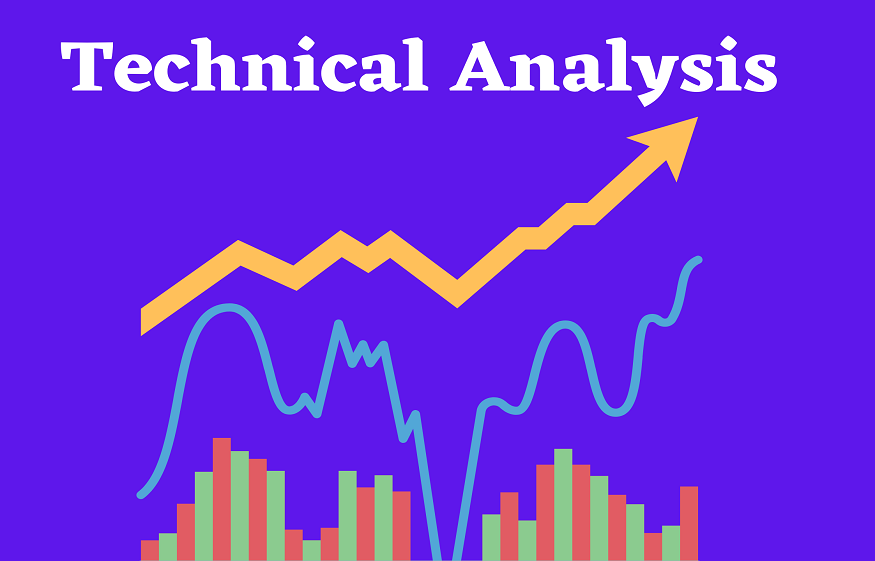
The world of futures trading is a complex and ever-evolving landscape, offering both lucrative rewards and potential pitfalls. In this dynamic arena, utilising technical analysis techniques becomes paramount for traders seeking to confidently navigate the market and make informed decisions.
By delving into the depths of advanced technical analysis tailored explicitly for UK futures, this article explores various chart patterns, indicators, and trading signals, equipping traders with valuable insights to enhance their trading strategies and seize profitable opportunities.
Chart patterns
Chart patterns are the foundational elements of technical analysis. These patterns, formed by price movements over a specific timeframe, offer valuable insights into potential future price trends. By studying these patterns, traders and investors can better understand market dynamics and make informed decisions.
Head and Shoulders
The ‘Head and Shoulders’ pattern is a prevalent technical analysis tool to identify potential reversals in a bullish trend. Traders and investors often look for the formation of this pattern as it can provide valuable insights into market dynamics and potential shifts in price direction. By understanding and recognising the ‘Head and Shoulders’ pattern, market participants can make more informed decisions regarding managing their investments and capitalising on potential trading opportunities.
Double Tops and Bottoms
‘Double Tops’ and ‘Double Bottoms’ are influential chart patterns traders analyse to identify potential reversals in market trends. A double top resembling the letter ‘M’ indicates a bearish reversal, where the price will likely decline.
On the other hand, a double bottom, resembling the letter ‘W’, suggests a bullish reversal, indicating that the price is likely to rise. These patterns serve as valuable signals for traders to make informed decisions and take advantage of market movements.
Indicators
Indicators are statistical calculations based on price and volume. They offer traders a more objective view of the market’s direction and momentum. Popular indicators comprise the Moving Average Convergence Divergence (MACD), Relative Strength Index (RSI), and Bollinger Bands.
Moving Average Convergence Divergence (MACD)
The Moving Average Convergence Divergence (MACD) is a widely used momentum oscillator in technical analysis. By analysing the relationship between two moving averages, the MACD provides valuable insights into market dynamics and can assist in making informed trading decisions. Its versatility and effectiveness make it an indispensable tool for traders and investors.
Relative Strength Index (RSI)
RSI (Relative Strength Index) is another prevalent technical indicator that effectively measures the speed and change of price movements in a market. Traders and investors commonly utilise it to identify potential overbought or oversold conditions, which can provide valuable insights into forex market trends and potential reversal points. Market participants can make more informed decisions by analysing RSI values and fine-tuning their trading strategies to capitalise on market dynamics.
Trading signals
Trading signals are precious tools for traders, offering information, including suggested buy and sell points, price targets, and stop-loss levels. These signals are meticulously generated and delivered by reputable providers with extensive market analysis and expertise.
By incorporating these signals into their trading strategy, traders can gain valuable guidance while also considering other crucial factors such as prevailing market conditions, risk tolerance levels, and personal trading goals. This holistic approach enables traders to make well-informed decisions and significantly enhances their chances of success in the dynamic and ever-evolving world of trading.
Fundamental analysis in UK futures trading
Fundamental analysis plays a crucial role as a valuable complement to technical analysis in futures trading. It encompasses a comprehensive evaluation of the intrinsic value of an investment by examining various related factors, including economic, financial, and other qualitative and quantitative elements.
By delving into the impact of macroeconomic indicators, industry trends, and company-specific financial performance, traders can gain a thorough understanding and a more comprehensive perspective of the market dynamics. This holistic approach empowers traders to make more informed trading decisions and navigate the complexities of the futures market with greater confidence.
Risk management in futures trading
Risk management is a crucial and fundamental component of any successful futures trading strategy. In the context of futures trading, it encompasses the various methods and techniques employed by traders to control and mitigate their risk exposure effectively.
These risk management strategies include but are not limited to, setting stop-loss orders to limit potential losses, diversifying trading portfolios to spread risk across different assets or markets, and closely monitoring and tracking market volatility to make informed trading decisions.
By diligently implementing and adhering to these robust risk management practices, traders can not only safeguard their capital but also enhance their overall profitability in the long term. This disciplined approach helps traders navigate the unpredictable nature of financial markets, providing them with a solid foundation for sustainable success.
All in all
In UK futures trading, technical analysis is an indispensable tool. Understanding and applying chart patterns, indicators, and trading signals can significantly enhance trading decisions. As with all trading strategies, it’s crucial to remember that while technical analysis can provide valuable insights, no method guarantees success. Traders should always balance technical analysis with fundamental analysis and sound risk management.
